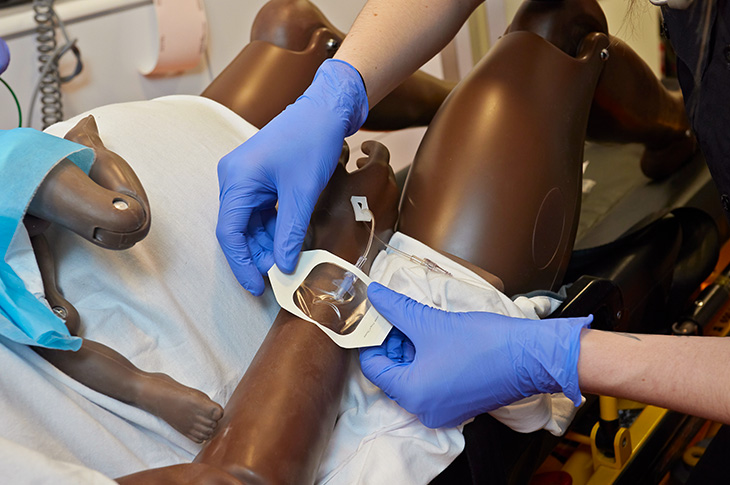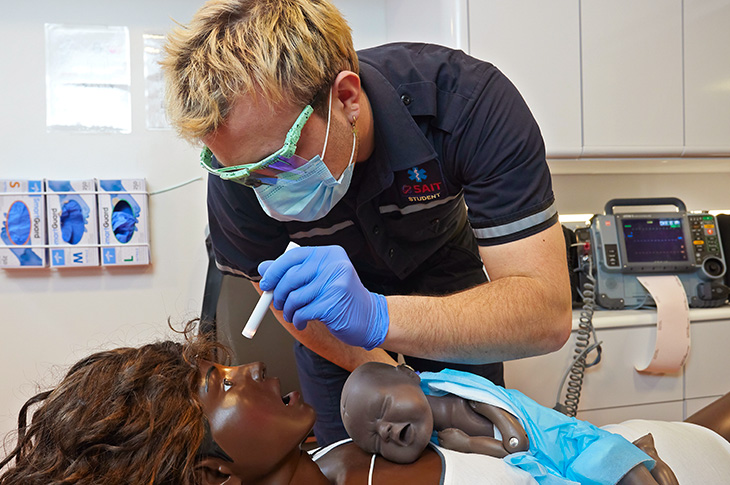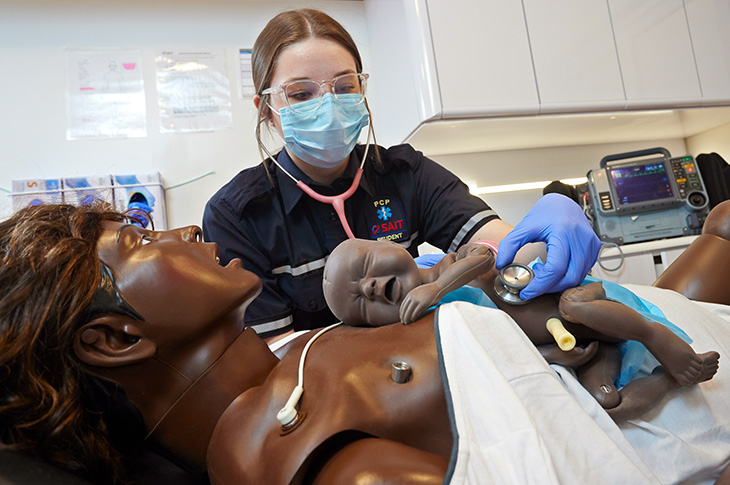A look at learning with Valentina
Eric Poupart (EMR '22) and Caylee MacKenzie (EMR '22), current students in SAIT's primary care paramedic program, are shown in an ambulance simulation space as they practice and demonstrate their skills with the School of Health and Public Safety's new SimMom manikin, Valentina, and her newly born baby.


Because Valentina's shoulders, hip joints, knees and elbows rotate in lifelike ways, she can be placed into six birthing positions: supine, left lateral, semi-recumbent, with legs in stirrups, on all fours, and the McRoberts maneuver; Her baby can be placed in multiple positions to simulate normal, difficult, instrumental and placenta deliveries.
Valentina is also equipped with realistic "at term" abdominal skin plus sites for IV access and injections as well as the use of a blood pressure cuff, an SpO2 monitor (used to check for oxygen saturation in blood), electrocardiogram electrodes and defibrillator paddles. And instructors can use a headset and microphone to speak as Valentina, letting students interact with her in real time like an actual patient.
In this scenario, Valentina is in stable condition and Poupart is asking her questions about her current health status. MacKenzie is starting an IV saline lock in case Valentina will require intravenous medication delivered directly into a vein. Poupart continues his assessment (below) by checking Valentina's pupils for any reaction to the pen light.


From head to toe, the birthing baby has a range of true-to-life anatomical features including fontanelles and sutures on its skull, an umbilical cord and placenta, and fully articulated limbs.
MacKenzie (below) is assessing and monitoring the baby's breathing and fetal heart rate, which can also be set by the instructor through the simulation software.
SAIT's simulation labs are safe spaces to practice assessment, decide on and apply treatments, observe outcomes and rehearse providing care to patients of all ages.
Instructors view each simulation from a separate room, where they can adjust Valentina's pupils (normal, dilated and constricted), breathing patterns, heart rate, bowel sounds and bodily functions to help students prepare for nearly any situation.



Like what you are reading?
Find more stories from past, present and upcoming issues of LINK magazine!
Oki, Âba wathtech, Danit'ada, Tawnshi, Hello.
SAIT is located on the traditional territories of the Niitsitapi (Blackfoot) and the people of Treaty 7 which includes the Siksika, the Piikani, the Kainai, the Tsuut’ina and the Îyârhe Nakoda of Bearspaw, Chiniki and Goodstoney.
We are situated in an area the Blackfoot tribes traditionally called Moh’kinsstis, where the Bow River meets the Elbow River. We now call it the city of Calgary, which is also home to the Métis Nation of Alberta.

